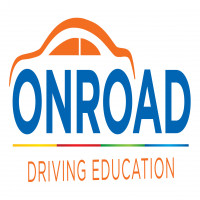Understanding the Different Types of Road Signs in Australia

Strong 8k brings an ultra-HD IPTV experience to your living room and your pocket.
Did your driving school emphasise the need to obey traffic rules and follow road signs rigorously? Have you ever wondered why your first driving lessons were about traffic signals and road signs? Traffic rules and road signs are not for decoration, they play a very vital role in ensuring safety and maintaining order on the road. Road signs and traffic signals tell a driver how to drive, when and where to stop when to drive, at what speed, and what to expect from the road ahead. By following the road signs, drivers adhere to a set behaviour and driving pattern, making it easier to know what to expect from other drivers and react appropriately. Driving becomes much easier, smoother, and more organised when all drivers follow the road signs diligently. This post will explore the significance of road signs and the different types of road signs in Australia.
Why Road Signs Matter
In a vast country like Australia, maintaining order and consistency on the road is of utmost importance. It’s only with consistent and clear rules that the roads can function smoothly without incident. Road signs play a huge role in maintaining this order and consistency with clarity and efficiency. However, if road users don’t understand these signs or neglect to follow them, it can lead to disorder and increase the risk of accidents on the road. That’s why it’s essential to have clear, visible road signs and a culture of obeying these signs. Road signs are of 4 main types and while some of them are mandatory to obey, others are there to help in navigation or provide a warning to the driver. Some Australian road signs may vary according to state. Driving instructors must teach students the road signs specific to their state. For example, a Sydney driving school will teach about common road signs and signs specific to Sydney and ignore those specific to other states.
Types of Road Signs in Australia
Road signs are the base of driving education whether you learn from a driving school or a private instructor. They are one of the first things new drivers learn in their driving lessons. Here are the common types of road signs you’ll see on Australian roads:
1. Regulatory Signs
Regulatory road signs specify compulsory road rules like speed limits, stop signs, no-entry zones, school zones, parking signs, give way signs, etc. They have either red or black text on a white background, making them easy to spot and recognise. Drivers must remember to always obey these signs and not following them can lead to legal penalties.
2. Warning Signs
Typically in yellow and black, warning signs are used to alert drivers of any issue or obstacle on the road. These signs warn the drivers about an upcoming problem to give them ample time to prepare mentally and respond to the problem appropriately. These signs can warn about sharp turns or curves in the road ahead, pedestrian crossings, animal crossings, slopes or dips ahead, etc.
3. Informational Signs
As the name suggests, informational signs are placed to give drivers some necessary information to help them in their journey. These signs provide useful data like the distance and location of fuel stations or rest areas, hospitals, schools, etc. They can have warnings for speed cameras or signs to indicate services or community facilities ahead. Informational signs can help drivers plan their journey and drive safely and easily.
4. Guide Signs
Guide signs help drivers find the right way to reach their destination easily and safely. These signs mark the routes and specify the distance and road changes ahead. They include freeway interchanges, mile markers, street numbers, route numbers, and exit signs. Guide signs specify the location, offer directions, and help users reach from one place to another.
Conclusion
Road signs are one of the basics of road laws and driving education. For new drivers, learning and understanding road signs is essential to navigate complex roads and reach their destination safely and quickly. If you’re a learner looking to understand these signs, you can join the Safer Drivers Course from a good driving school like Onroad Driving Education. We at Onroad offer a wide range of driving lessons and courses in Sydney, Central Coast, Wollongong, Newcastle, Canberra and Melbourne to suit your needs. Our expert driving instructors and specialised courses can help you learn all the skills required to become a safe and responsible driver for life.
Source Link
Note: IndiBlogHub features both user-submitted and editorial content. We do not verify third-party contributions. Read our Disclaimer and Privacy Policyfor details.







